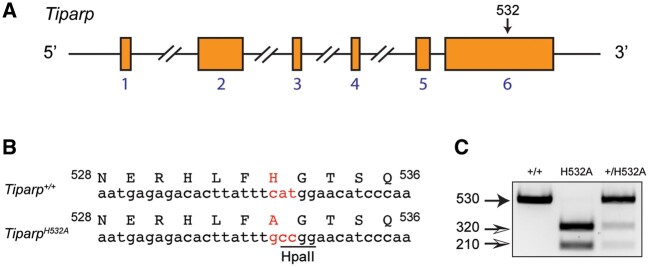Figure 1.
Generation of TiparpH532A catalytic mutant mice using CRISPR/Cas9-mediated gene editing. A, Schematic diagram of Tiparp wildtype allele with exons, and the approximate location of H532, which was targeted to create a TiparpH532A mutant mouse. Exons are indicated by the orange boxes and their numbers are indicated in blue font. B, To simplify genotyping, an HpaII restriction enzyme site was introduced simultaneously with the replacement of histidine 532 with alanine. C, Representative genotyping of wildtype, H532A mutant, and heterozygous mice.

